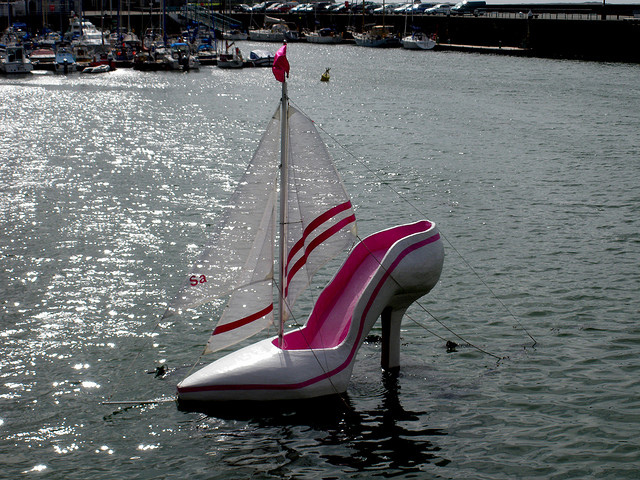
The 1990 classic film Pretty Woman with Richard Gere and Julia Roberts was full of great lines, but the best belonged to veteran actor Ralph Bellamy near the end of the film. Bellamy plays the role of James Morse, an aging naval shipbuilder under threat from ruthless corporate raider Edward Lewis (played by Richard Gere). After falling for the charm of Vivian Ward (played memorably by Julia Roberts) he relents and, rather than strip the assets from Morse’s firm, he goes into business with him. Morse strides out of the meeting with Lewis to announce:
Mr Lewis and I are going to build ships together, great big ships.
The point about Pretty Woman is that it’s Gere’s character who receives redemption not Julia Roberts’, and this is the moment in the film when we know that he has. It’s a feel-good moment. Director Garry Marshall’s choice of naval shipbuilding was no accident. Gere’s character could not have been made good by going halves in a napalm plant or land mine factory. Of all the areas of defence production, naval shipbuilding is probably the most wholesome and surely the most iconic.
As an unavoidably labour-intensive activity, shipbuilding also captures the imagination of politicians eager to ‘create’ jobs. It also turns regular defence bureaucrats into central planners worthy of the Soviet Union. In a little over a decade, there’ve been two attempts by Defence to put out a long-term plan for naval shipbuilding in Australia.
The first plan appeared in 2002. It set out a bold scheme to create a single monopoly shipbuilder to undertake the then planned schedule of naval construction (three Air Warfare Destroyers (AWD), two amphibious ships and two afloat support vessels) as well as the ongoing repair and maintenance of the fleet. Developed in close collaboration with local industry, the plan promised savings of $2.6 billion from an anticipated $12.7 billion business-as-usual cost over 15 years.
But the plan was dead in the water after analysis of a draft version of the plan exposed serious errors. The claimed savings were based on detailed workforce estimates for a monopoly shipbuilder doing all the work and two shipbuilders dividing the work by vessel class. Defence made the tactical error of releasing their detailed spread sheets, which revealed that they had assumed that the monopoly shipbuilder had fewer people in many skill categories than either of the two shipbuilders undertaking a subset of the work. It was preposterous. And, unsurprisingly, it was quickly rejected by the Government.
Defence has once again been working with local industry to chart a way ahead for naval shipbuilding. Released in tandem with the new Defence White Paper, the new plan trumps its predecessor by touting ‘savings in the tens of billions of dollars’ in delivering the vessels in the Defence Capability Plan. My detailed analysis of the plan can be found in Chapter 7 of this year’s ASPI Defence Budget Brief. While it recommends a number of sensible things, on the big issues it more than fails to deliver.
Three things stand out about the new plan. First, it seems to take as a goal the development of a healthy and permanent naval shipbuilding industry in Australia, irrespective of the cost of doing so. It proposes establishing a continuous rolling production line for submarines without asking whether the more leisurely delivery schedule suits Australia’s demand for submarines or acknowledging the additional of cost of such a program.
Second, the new plan fails to deal with many of complex issues that make naval shipbuilding policy so difficult. While it’s failed 2002 predecessor took the time to explore the questions of industry consolidation, contracting strategies and commercial competition, these issues are given scant attention this time around.
Third, the touted savings aren’t supported by any credible analysis. The supposed ‘tens of billions’ in savings come from exaggerating the difference in cost between productivity levels well below those presently achieved by local shipbuilders and a goal representing best practice. Then, to compound the error, it assumes that all of the productivity gain will accrue to the Commonwealth without the shipbuilder and workers getting a share.
The end result is a plan reads more like a work of advocacy rather than objective analysis. It has a vision and it assembles all the arguments it can to support that vision without mentioning the costs and risks. The heady notion of building ships, great big ships, has overtaken everything.
Meanwhile, shipbuilders are background-briefing journalists to get shock headlines on the front page, and unions are threatening to strike if the government doesn’t order more ships and guarantee work flows. These vested interests are both likely to be disappointed, despite all sorts of minor adjustments made in recent times; the ‘valley of death’ at the end of the AWD program look set to be realised. Like it or not, Navy’s demand for vessels is insufficient to maintain a consistent workload towards the end of the decade—especially now that a life-of-type extension for the Collins class looks likely in order to buy time to think through and design a replacement. What matters now is how we prepare for the next round of projects.
We need a comprehensive canvassing of the many complex issues around naval shipbuilding in Australian, and an objective analysis of the options for equipping the Navy with the vessels it needs. Regrettably, the 2013 plan produced by Defence comes nowhere close to what’s needed, and it’s even a step backwards from what was produced in 2002. Perhaps it will be a case of third time lucky.
Mark Thomson is senior analyst for defence economics at ASPI. Image courtesy of Flickr user marc e marc.

